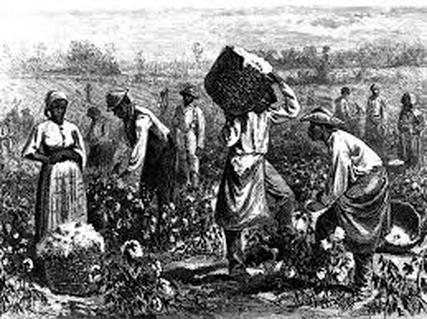Slave trade in america 1700
Slavery in the colonial United States - Wikipedia
In the British established headquarters on the Gold Coast a few miles east of Elmina , giving competition to the Dutch in that region. In , during a conflict between England and France in Europe the English destroyed the French position on the Senegal River, and the following year the French blew up the English fort on the Gambia.
By , the Swedes and Germans had dropped out of the trading wars, and the Danes were limiting their trading to the coastline east of Elmina.
And with the treaty that ended the war between the French and the British — the Treaty of Utrecht — the French and British recognized each other's positions and slave trading in Africa, the French holding onto their position around the Senegal River and inland, where their inland trading was being handled by African middlemen.
As for the Kongo, the cultural disintegration and the political disarray that the Portuguese left was accompanied by the development of a blend of Christianity and paganism.
A young woman named Kimpa Vita, also to be known as Dona Beatrice, believed herself to be possessed by the spirit of St. Anthony of Padua, a popular Catholic saint and miracle worker. She told her followers that Jesus, Mary and other Christian saints were really Kongolese.
She conspired with one of the contenders for the throne. She acquired political enemies as well as the hostility of Christian missionaries. And, in , these hostilities led to both her and her child — claimed to have been conceived by her guardian angel — being burned at the stake for heresy.

In Luanda , power was measured by the number of slaves one owned. A businessman might own fifty slaves while the owner of a great spread of land might own more than a thousand.
With slave labor, Luanda's first streets were constructed, and in the two halves of the city were linked by paved roads. Luanda had become Africa's leading point of export for slaves. South of Luanda and on the Atlantic coast, Benguela grew as a major point of departure for slaves.

Slave trading dominated the economy of these areas, and attempts by the Portuguese to develop agriculture in these areas were slowed by a labor shortage caused by the slave trade.
Traders roamed the interior buying slaves from local chiefs, returning the slaves to Luanda or Benguela in groups sometimes of several hundred. The slaves were held in enclosures and open corrals, restored to health for their journey abroad.
The trip to Brazil took from five to eight weeks, the slaves packed closely together and in places under decks that did not allow them to stand. And some of the slaves did not survive the journey.
African Timelines Part III: African Slave Trade & European Imperialism
Slavery had long been brutal, as with the Roman Republic's invasion of Sardinia and its chained gangs of plantation workers in Italy. And slavery had at times been soft, as with the bringing of servants, scribes and such into homes or businesses, treating the slaves as friends or members of one's family and allowing them property of their own and some freedoms.
The taking of slaves by Muslims was extensive but would not be as obvious to people in the twenty-first century because fewer known descendants of slaves were around to remind people of it — the Muslims were castrating their slaves.
The slavery developing with trade between Christian Europeans and Africans was no less brutal, and that trade was intensifying in the s and s.
The Origins of the Slave Trade
The number of slaves exported from Africa to Christian societies has been estimated at , between and , at 1,, between and , and at 6,, between and For some time in the s an average of around 60, slaves were exported per year. It has been estimated that each year six persons were taken for every thousand population — whereas 50 persons are said to have died from disease for every thousand. The slave taking, for export or domestic use, was enough to create a widespread sense of insecurity in Africa.
Communities along the Atlantic coast were on constant watch against intruding slave traders sneaking into their village and fleeing with their children and young adults. By now the Portuguese were losing more to Dutch, French and English traders, who could provide better goods to the Africans for less.
And, unlike the Portuguese, they were also willing to sell the Africans guns. The Africans preferred trading with them over the Portuguese. Portuguese attempts to enforce trading monopolies were largely ineffective. The British by now were commercially aggressive. They were putting their capital to work in the slave trade, which they had begun to dominate — the buying and selling of slaves being a part of a free enterprise market economy. By the s, trade between the Europeans and Africans along the Gold Coast had changed.
The flow of gold from the interior — from Asante , which controlled the gold mines — to the Gold Coast had ended.

Rather than trading to obtain gold, the Europeans had begun paying for slaves with gold. With the demand for slaves having risen, Americans were now willing to pay from 9 to 10 ounces of gold for a prime male slave.
With heavy labor being the main interest in slavery, there was less demand for a female slave, and they were going for two ounces of gold each.
Slavery - Crash Course US History #13